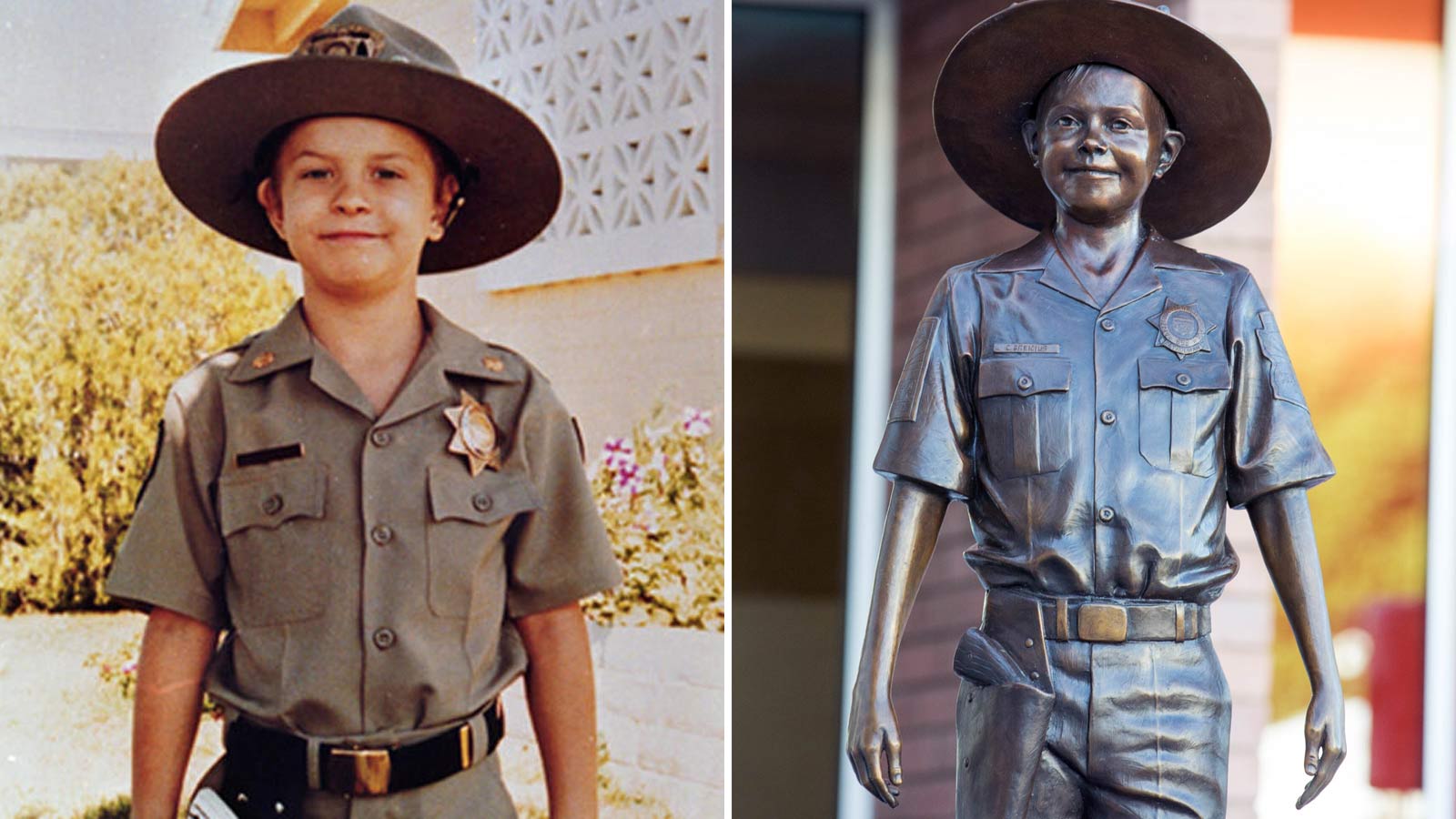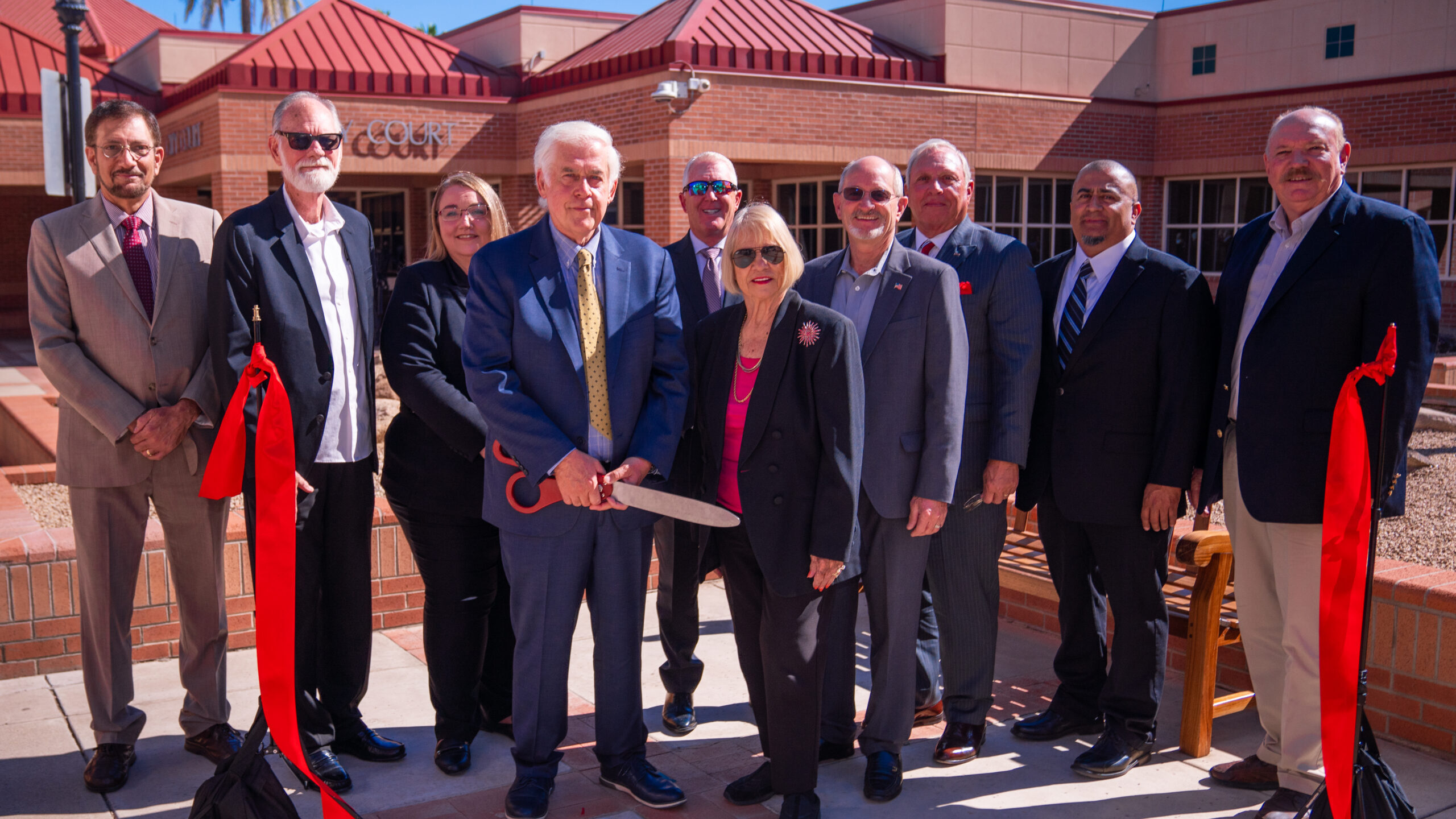Arizona water allocations near limits of Colo. River flows
Aug 23, 2012, 5:00 AM | Updated: 8:30 am

WASHINGTON — The decades of compacts, laws, contracts and regulatory guidelines that are supposed to manage bordering states’ use of the Colorado River have come to be known collectively as the “Law of the River.”
But the Law of the River could soon bump up against the laws of physics.
Ninety years after the first agreements were drawn up, and more than 50 years after the Supreme Court set water-use levels for Arizona and its neighbors, demand for Colorado River water continues to grow. But the amount of water flowing in the river, and the allotments to different users, remains the same.
In 2011, Arizona used more than 99 percent of its allotted 2.8 million acre-feet of water for homes, crops, recreation and businesses across the state.
Trying to squeeze every last sanctioned drop from the exhausted river has an effect up and down the Colorado, from the reservations upstream to the croplands 1,000 miles downstream.
“If it wasn’t for water in this area, they (farmers) wouldn’t be farming here,” said Ed Carpenter, manager at the Yuma County Water Users’ Association. “So here, water is everything.”
By the time it reaches Carpenter’s farmers, the water in the Colorado River has already made a long journey from its sources in the snow-capped Rocky Mountains.
If left untouched by man, the river would deliver about 16.5 million-acre feet of water to the Gulf of California annually. But today only a fraction of that amount reaches the gulf.
A 90-year history
The apportioning of the river began with the 1922 Colorado River Compact, a deal by seven Western states to divide the river and its tributaries into two basins, the Upper Basin and the Lower Basin. Each basin was allotted 7.5 million acre-feet per year under the compact, according to the Bureau of Reclamation.
In 1948, the Upper Basin states entered into an agreement allocating its 7.5 million acre-feet between Colorado, New Mexico, Utah and Wyoming.
When the Lower Basin states were unable to reach an agreement by 1952, Arizona went to the Supreme Court to force the issue.
Four years later, the court decreed that California was entitled to 4.4 million of the Lower Basin’s 7.5 million acre-feet of water, Arizona would get 2.8 million acre-feet and Nevada would get 300,000 acre-feet.
After the seven compact states took their shares from the river system, that left 1.5 million acre-feet annually to Mexico and, ultimately, the Gulf of California, an amount required under a 1944 treaty with Mexico.
An acre-foot — the amount of water needed to cover an acre of land a foot deep — is 325,851 gallons of water, enough to supply two typical U.S. homes for a year, according to government estimates.
On its trip through Arizona, waters from the Colorado and Little Colorado — the biggest tributary in the system – provide water to crops and homes, power businesses and play a vital role in the state’s tourism industry.
The most obvious beneficiary is the Grand Canyon, the state’s largest and most visited tourist spot. It attracts nearly 4.5 million visitors each year, according to the National Park Service.
One of the biggest lures for visitors to the national park is the rafting offered on the Colorado River.
“We’re very much affected by its flows,” said John Veil, owner of Outdoors Unlimited in Flagstaff, one of the 15 businesses that offer rafting tours on the river.
“The Little Colorado River doesn’t have as much of an effect on us as the Colorado River, but it is the first quarter of some of our trips,” Veil said.
The confluence of the Little Colorado and the Colorado is a big attraction for people hiking in the national park as well as for rafters, said Lindsay Winter, the office manager at Grand Canyon Whitewater Rafting in Flagstaff. The mineral composition of the waters there give the river a milky blue color.
“More than 80 percent of our trips stop there because it’s one of the passengers’ favorite spots,” Winter said. “It’s usually something that our passengers have seen before they come, so they usually want to stop and see it.”
Lives, jobs, recreation
Farther downstream, Bullhead City and Lake Havasu City rely on the river to live, but they also use the waters for jet skiing, boat rentals, rafting and tubing, said Lisa McCabe, president of the Bullhead Regional Economic Development Authority.
“Tourism is the No. 1 industry in this area,” McCabe said. “But the first use of the water is drinking, second is for farming and the third use is for tourism and recreation.
“There are so many jobs that are contingent on the river, not only the primary jobs, but also secondary jobs,” she said.
Jobs like the large marine industry in Lake Havasu City that builds, services and repairs boats, said Gary Kellogg, president and CEO of the Lake Havasu Partnership for Economic Development.
“The water has a lot of uses out here,” Kellogg said. “We pump it to a lot of different cities, but since we are a tourism-based city, so many of our jobs here rely on the river.”
But of the 2.8 million acre feet of water the state can take from the Colorado River, “the vast majority is used for agriculture,” said Mitch Basefsky, a spokesman for the Central Arizona Water Conservation District.
Crops in the desert
Agriculture is a $6 billion industry in Arizona, so it has an economic impact beyond the fields, said Vicki Scott, the quality assurance director at Amigo Farms in Yuma.
One of the benefits of farming in Yuma is the ability to farm and harvest crops year round, said Scott. But the desert location that allows year-round farming also requires massive amount of irrigation. Amigo farms more than 7,000 acres, harvesting different types of lettuce, melons and some occasional seed crops, like alfalfa hay and wheat.
Farmers are notorious for worrying — about the weather, the availability of water and the cost of farming — Scott said. Any big changes in those costs, and farmers are forced to worry about their bottom line, too. And water is a worry.
There is enough to worry about, without wondering if legislation in Washington, which would affect water on tribal lands nearly 1,000 miles upstream, is going to change their water allotments.
“As general rule farmers don’t really worry about those issues, they have enough to worry about,” Scott said. “The bills are long and tedious, and unless it passes we try no worry about it.”
While farmers don’t stay awake at night thinking about the legislation that could affect their water supply, maybe they should, Scott said.









